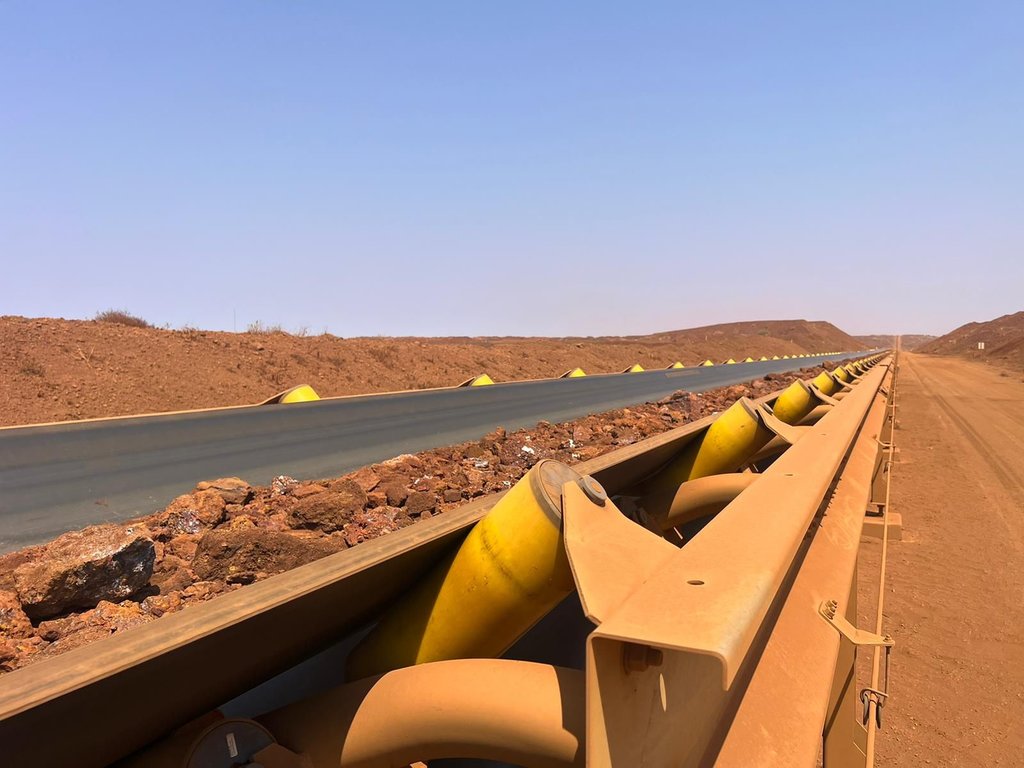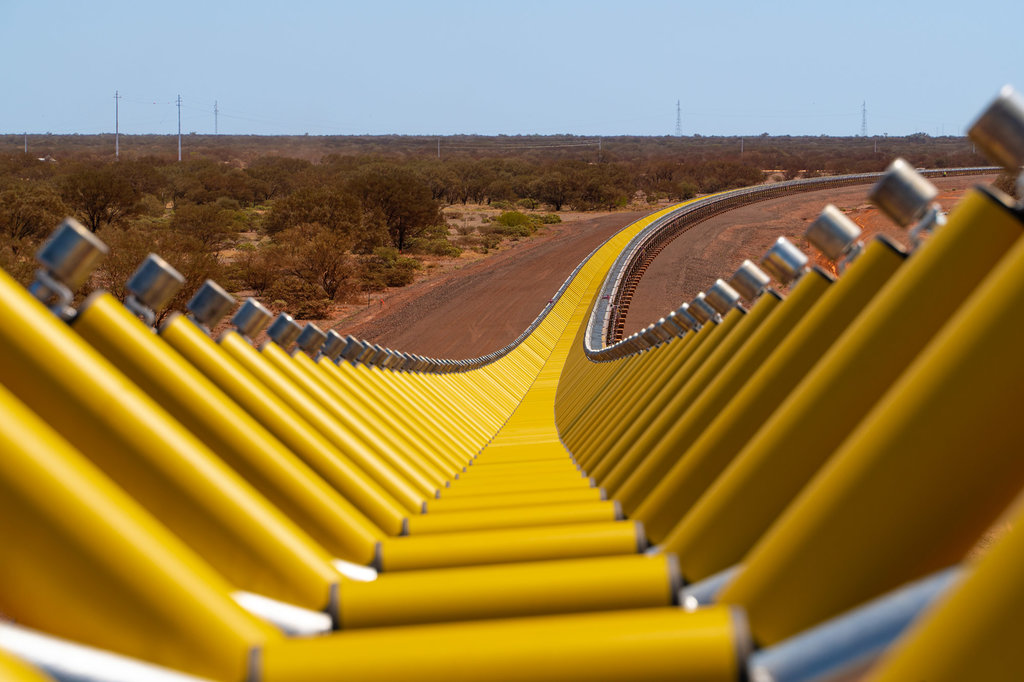Company Insight
Sponsored by PROK
Smart miners are embracing innovative new tech to make mining conveyor roller maintenance easier and more effective
The mining sector is notorious for being slow when it comes to embracing new technology.
Main image credit:
A lot of time, money and manpower is invested to keep a conveyor system running efficiently. A big part of this is dedicated to conveyor roller maintenance.
Mining companies are faced with the task of changing out dozens of rollers on any given day, and sometimes this is done without knowing whether the roller has reached the point of potential failure.
The roller maintenance landscape is evolving, and composite rollers, like PROK HDPE with its predictive maintenance technology, are increasingly becoming the preferred option.
Why Composite Rollers?
Composite rollers offer several advantages over steel rollers, including:
- Lightweight: Composite rollers are up to 33% lighter than steel rollers, making them easier to handle and install, and reducing the risk of worker injuries.
- Durable: Composite rollers are made from a combination of materials that are resistant to abrasion, corrosion, and impact, making them ideal for harsh mining environments.
- Low-maintenance: Composite rollers require less maintenance than steel rollers, reducing downtime and costs.
Understanding wear on composite conveyor rollers
Currently it is very difficult to know how much, and the type of wear that a roller has experienced.
Excessive wear can be an indicator of up-stream conveyor issues such as excessive carry-back or burden overflow.
In particular, return rollers are exposed to high levels of carry-back (dirty side of the belt) resulting in excessive wear, which is the second most common failure mode for return rollers after poor sealing.

Caption. Credit:
Predictive maintenance to reduce costs
Adopting effective predictive maintenance strategies allows teams to anticipate impending failures and plan accordingly, in turn reducing costs.
Predictive maintenance when applied to roller changeouts reduces the need for unscheduled shutdowns. Knowing the appropriate time to schedule in a shutdown or roller changeout has huge benefits for mining companies.
Another benefit is reduced damage to the belt, as maintenance teams can execute maintenance tactics prior to failure.
World first wear indicator technology
In a world first, PROK has introduced new visual wear indicator technology to the market which assists mining companies to improve their maintenance planning.
The Original PROK yellow tube combines with a green inner layer to act as a visual wear indicator for maintenance teams so they can better plan their roller changeouts.
This innovative feature will help mining companies to simplify idler maintenance and reduce costs.
The co-extruded HDPE tube changes colour after 5mm of wear, allowing maintenance and scheduling teams the ability to identify worn rollers, localised wear and in turn upstream conveyor issues such as excessive carry-back or burden overflow contacting the roller.
The visual indicator enables the implementation of intelligent scheduling strategies. It provides indications of potential problematic areas should a roller wear quickly and show the wear indicator.
Lightweight and belt friendly
Composite rollers have been steadily gaining popularity in recent years, largely due to their lightweight properties and durability.
PROK HDPE on average is 33% lighter than steel alternatives, meaning maintenance personnel can quickly and safely execute roller change outs. The reduced weight makes them easier to handle and install, requiring less physical effort from workers.
This results in increased efficiency, allowing maintenance tasks to be completed more quickly. For instance, when rollers need to be replaced or repaired, workers can move and install composite rollers with minimal effort, reducing downtime and increasing productivity.
The non-metallic HDPE tube also significantly reduces the likelihood of excessive damage to the belt when a failure does occur, meaning less interruptions to production and unscheduled downtime.

Caption. Credit:
Achieving important safety outcomes
Handling heavy steel rollers can lead to accidents, strain, and injuries, especially in situations where precise positioning is required.
Composite rollers eliminate much of this risk, providing a safer environment for the maintenance team.
Steel rollers often feature exposed pinch points where workers’ hands and fingers can inadvertently become trapped when setting or adjusting the rollers. Composite rollers are typically designed with fewer exposed pinch points, further reducing the risk of accidents that could cause hand and finger injuries.
The lightweight properties of PROK HDPE also make them a suitable choice for extreme applications, for instance conveyor systems that operate in higher altitude in countries such as Peru and Chile.
Working at high altitudes can have various physiological effects on individuals due to lower oxygen levels, such as decreased oxygen saturation, increased heart rate, and increased respiratory effort. These factors can contribute to fatigue and decreased cognitive performance. Altitude sickness can further exacerbate these symptoms and impact worker productivity.
The challenge of having to lift heavy steel rollers further amplifies this issue for operations in high altitude. The reduction in weight per roller carried through the use of composite rollers can alleviate this issue.
Innovation at work.
PROK HDPE is the latest innovation in a long line of industry-leading developments from PROK.
Pioneering the development of quality conveyor idlers in the Australasian market, today PROK is the world’s largest manufacturer of quality conveyor products, with manufacturing facilities in Australia, Brazil, USA, Chile, Indonesia and Canada.
Contact information
PROK
285 Collier Road
Bayswater
WA 6053, Australia
Tel.: +61 8 9347 8500
Fax: +61 18007 76522
Email: conveyors.au@prok.com
Web: www.prok.com
